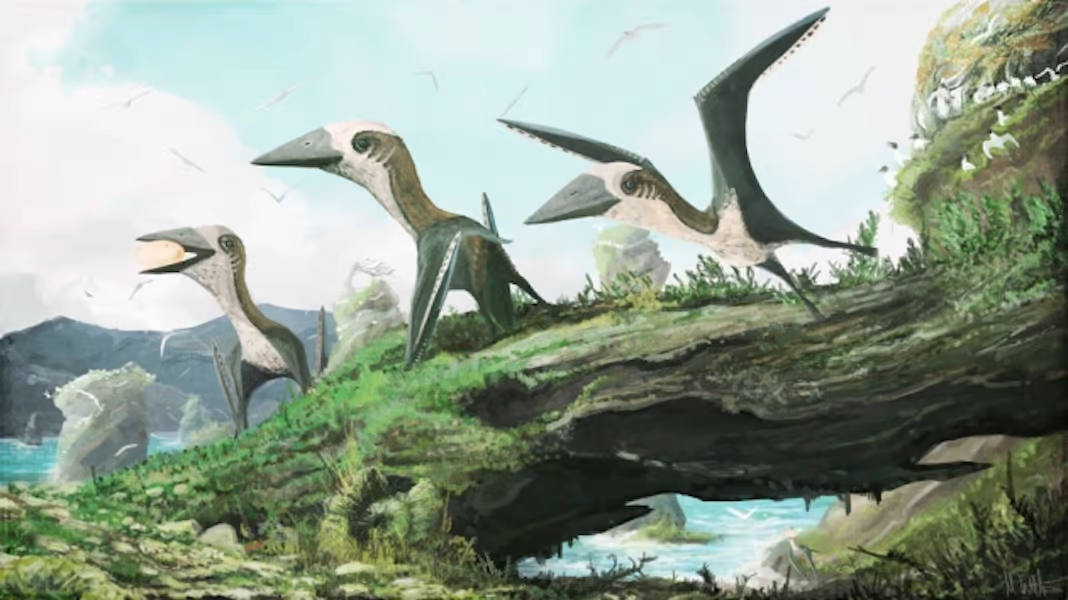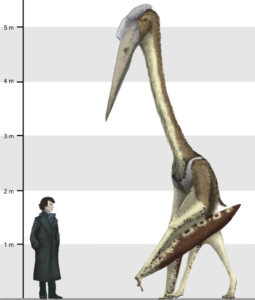The Unsolved Case of Pterodactyls is explained

As you heard the term “Pterodactyl,” you may envision winged reptiles, yet the word truly describes an assortment of similar reptiles that existed throughout the period known as the Cretaceous. Pterodactyls, or dinosaurs categorised as pterosaurs, were amazing creatures. On the contrary, together, these beings are not as straightforward as they seem.
A lot of individuals employ the name “teradactyl” to describe both Pteranodon and Terodactyl, 2 renowned Mesozoic species of The two flying snakes were unusually far from each other.
Learning The Spelling of Pterodactyl.
The right pronunciation is “pterodactyl,” a term that confuses many owing to its quiet ‘P.’ But why did this quiet word arise as well as what is it meant for?
Why The Absence of a ‘P’?
The quiet ‘P’ in terms such as “pterodactyl” is a grammatical vestige of Greek. In the language, we frequently use the initial pronunciation of imported terms.
A Tiny Pterodactyl

Nemicolopterus is one of the tiniest pterodactyls, with a length of approximately twenty-five centimetres / ten inches (however the sole documented species of this species may have been a juvenile).
The Biggest Pterodactyl

The biggest pterodactyl was Quetzalcoatlus. This North American pterosaur existed during the late Cretaceous era. It possessed a wingspan of almost Eleven metres / thirty-six feet and was more than three metres / 9.8 feet high when the length of its neck was stretched.
Terodactyl vs. Pterosaur: A Comparison
While the name “pterodactyl” has come to be used to describe any winged Ancient animal it really refers to a subgroup of pterosaurs known as pterodactyloids.
Terodactyl: Exploring Its Fascinating Origins
The initial finding and examination of teradactyl relics in the eighteenth century contributed significantly to our understanding of ancient existence.
A closer look at the mysterious kinds of Pterodactyls
There was no one shape or dimension for pterodactyls; instead, there was a vast variation.
Pterodactylus: An Ancient Mystery
The small pterosaur pterodactyl had a typical wings length of roughly one metres. As among the first pterosaurs discovered, it was the focus of intense investigation.
Biological features
Pterodactyls had several unique traits. Their powered flight was enabled by feathers supported by just one elongated thumb. Their beak was laced with teeth that were pointy, but their thin skeletons prevented their bodies from becoming excessively hefty.
HABITS AND DISTRIBUTION
These flying reptiles inhabited both maritime and upland habitats. The fossils found on all continents provide proof for their presence.
Nutrition and Food Traditions
Carnivorous pterodactyls primarily ate fish, small reptiles, and bugs. They flew highly and had an excellent eye for prey.
PTERODACTYL FLIGHT
Whether pterodactyls developed the capacity to fly is a widely discussed topic in the study of dinosaurs Their flying remains one of the environment’s most remarkable marvels.
Fertility & Cycle of Life
The reproduction habits of pterodactyls remain largely unknown, yet they are believed to produce eggs, as do contemporary birds. It’s unclear whether they produce eggs or take care of their offspring.
EXTINCTION
Pterodactyls perished around sixty-six million years ago, along with numerous other reptiles and ancient creatures, possibly as a result of changing conditions and struggle for food.
The Rise of Pterodactyls in Popular Culture
These prehistoric winged creatures have inspired a number of pieces of fantasy, either literature and film.
Although researchers have identified the many varieties of pterosaurs, many individuals nevertheless refer to them collectively as “pterodactyls.” This was well demonstrated in the 2005 movie Pterodactyl, notwithstanding the reality that pteranodons were used instead of pterodactyls. Researchers acknowledge that this phenomenon is an unfortunate consequence of the pterosaurs’ legendary position.
Pterodactyl Fossils and Studies
As greater and greater remains of pterosaurs are discovered and technology develops, our knowledge of these reptiles expands. Researchers are constantly uncovering new knowledge about their anatomy and behaviours.
Maintenance & Restoration
Pterodactyls were gone when they were free, but their remains ought to be preserved so that researchers may learn more about the past of the planet.
The Mysterious Kingdom of Pterodactyl Interesting Facts
1.They lived together throughout the Mesozoic Era.
2.Etymology “pterodactyl” derives directly from the Greek words “ptero” (wings) and “dactylos” (fingertips).
3.According to common opinion, pterodactyl wings possessed membranes that spanned across their extended fingertips.
Terodactyl Conclusion: Significance for Further Study
Pterodactyls, prehistoric bird monarchs, can teach us much about the history of the Earth. Palaeontologists remain fascinated by these distinctive creatures due to their amazing flying ability as well as additional characteristics.
Hatzegopteryx, a European pterosaur having size comparable to the Quetzalcoatlus, is only survived in fragmentary fossilised parts. Two fossils were unearthed, each dating back around sixty-six million years.
Pterodactyls and Its Historical Relevance: A Deeper Look
Pterodactylus is considered to be one of the more iconic ancient species, having appeared in several literature, films, television shows, and video games. The unofficial word “pterodactyl” can apply to any species in the family Pterosauria, although it is mainly employed to refer to Pterodactylus, the most renowned creature in the genus.
FAQ’s About Pterodactyls
Q: Can you VIEW Pterodactyl fossils in a museum?
Yes, pterodactyl fossils may be found in various museum collections across the globe.
Q: Why does the ‘P’ in pterodactyl remain quiet?
The quiet ‘P’ in pterodactyl is derived from the Greek word “pteron,” which likewise has a silent ‘P’. This accent was preserved in English.
Q: Can the silent ‘P’ appear in the English language?
Indeed, there’s a number of additional English terms with a quiet ‘P,’ frequently borrowed from Greek, such as “pneumonia” and “psychology.”
Q: Are there any more reptiles having equally hard pronunciations?
Yes, numerous dinosaur labels, generally borrowed from Greek or Latin, have distinct pronunciations, such as “Archaeopteryx” and “Deinonychus.”
*Disclaimer:*
The word “pterodactyl” seems to be an apostrophe or mechanical mistake. If you wanted “pterodactyl,” that relates to an ancient flying creature. Yet, if you’re talking about a particular good, service, or concept called “pterodactyl,” keep in mind that the data supplied here relies solely on the premise that the term is spelt correctly. We suggest double-checking both the spelling and intended use of the phrase “pterodactyl” to guarantee reliable data. Any dependence on this material is at your own danger, and we assume no liability for any misunderstandings or misunderstandings caused by the use of this phrase.
Read More Blogs: Mughal Delhi | rajkotupdates.news
